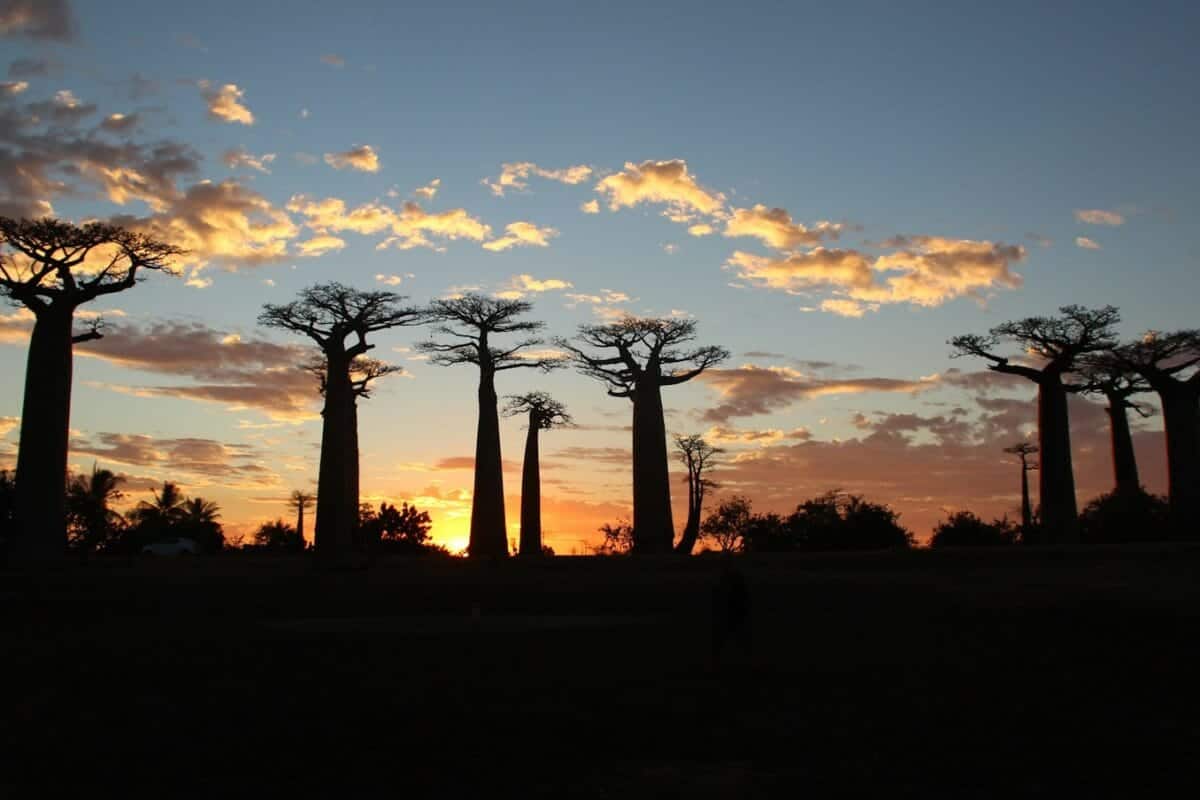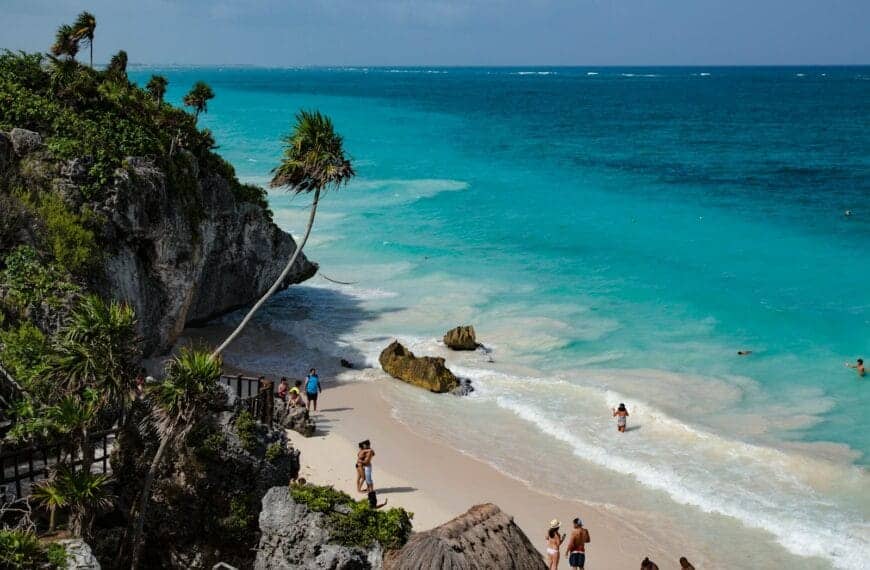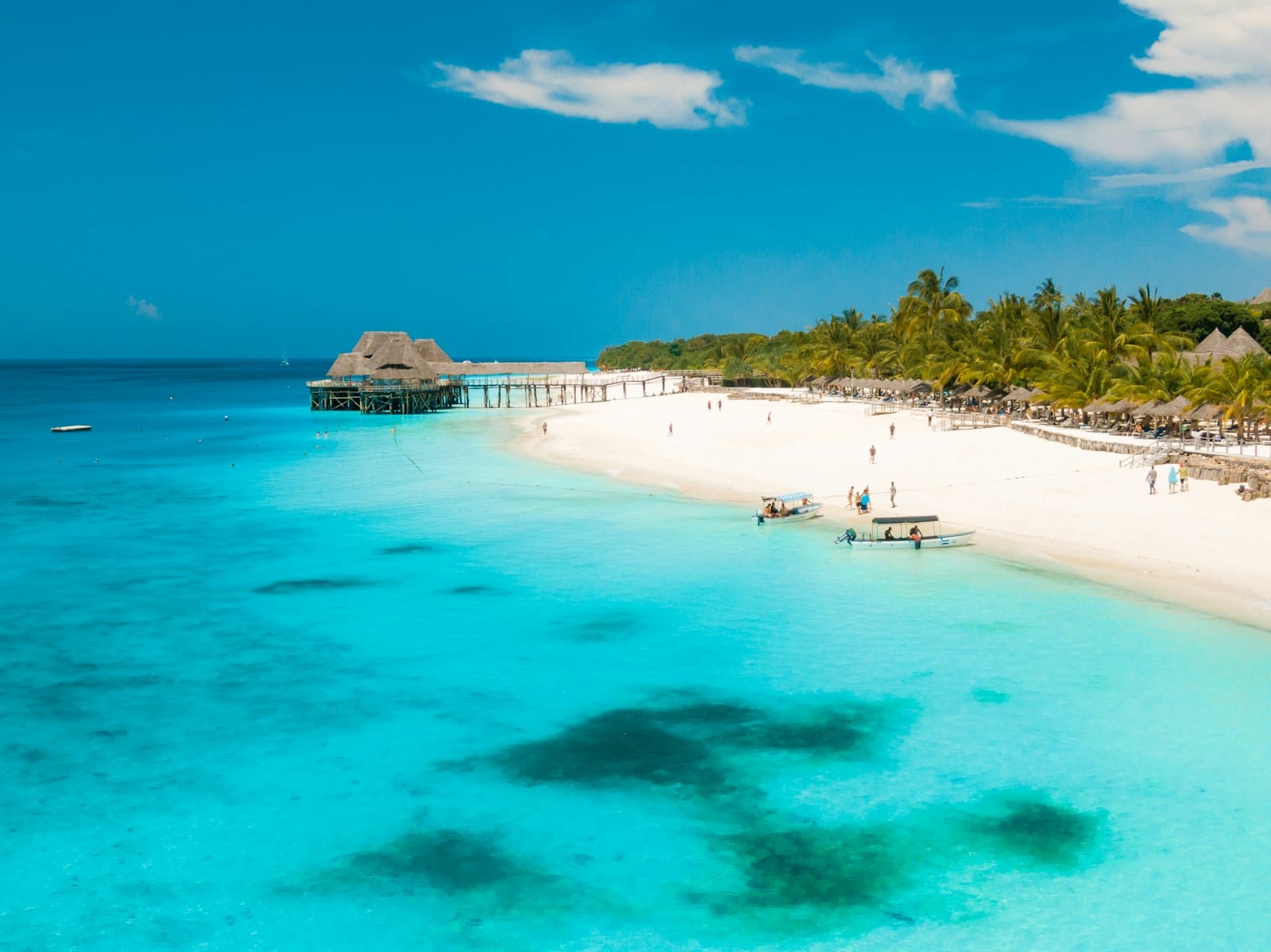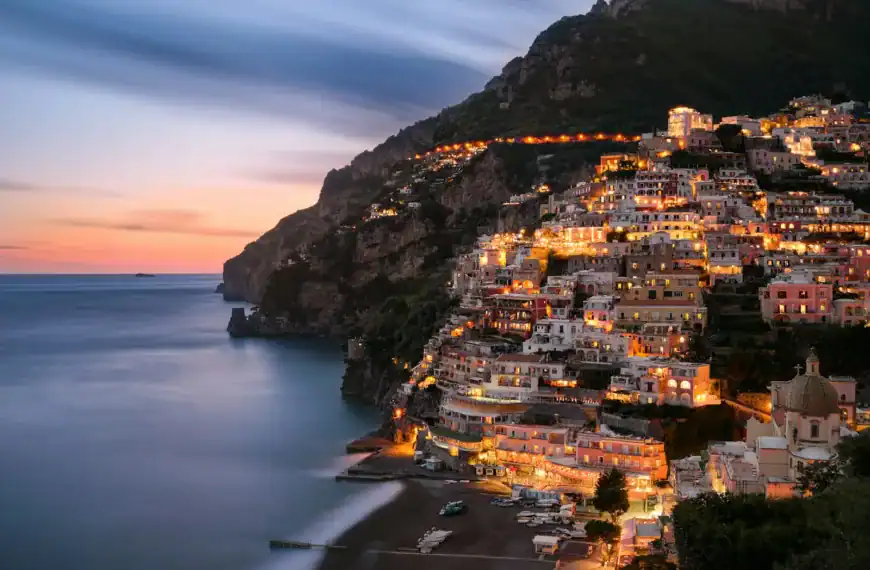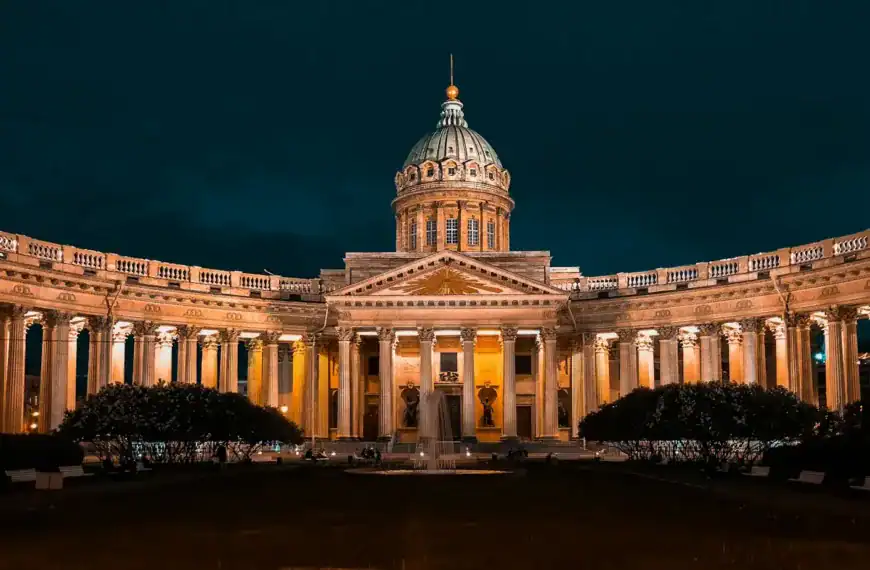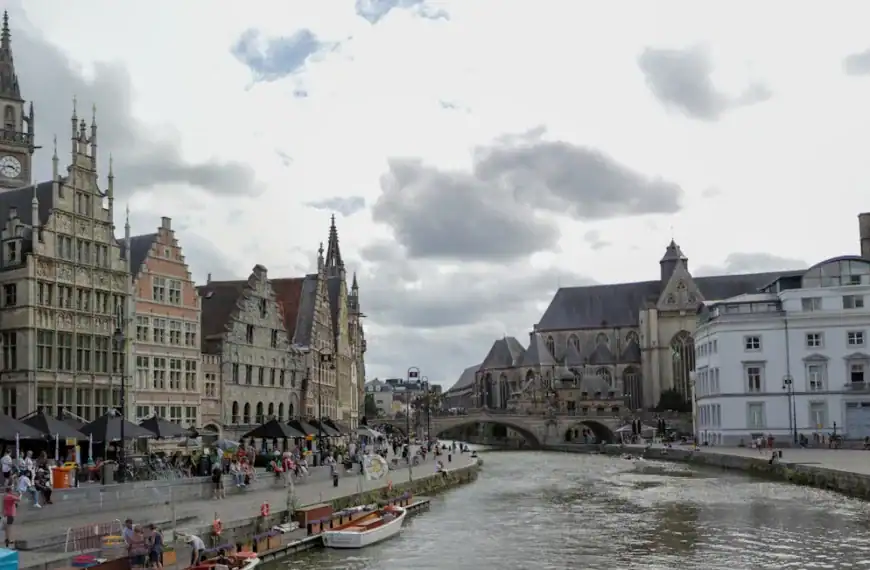Madagascar Travel Guide: Wildlife, Wonder & Wild Landscapes
Introduction to Madagascar Travel Guide
Madagascar is not just a destination — it’s a world apart. Separated from Africa millions of years ago, the island evolved in isolation, creating a surreal paradise of baobab trees, lemurs, rainforest canyons, and coral-ringed beaches. Nearly 90% of its flora and fauna exist nowhere else on Earth.
This is a country for the curious and adventurous: hike through stone forests, meet local tribes, dive along untouched reefs, and spot chameleons camouflaged in your path. Madagascar is raw, rare, and rewarding — perfect for travelers who prefer the road less paved.
Start planning with our complete Madagascar Travel Guide — including region-by-region advice, wildlife experiences, transport tips, travel costs, and the best things to do across the island.
💡Quick Facts:
Continent: Africa
Country: Madagascar
Area: 587,041 km² (226,658 mi²)
Population: ~30 million
Density: ~51/km²
Capital: Antananarivo
Regions/Subregions: 6 provinces: Antananarivo, Toamasina, Fianarantsoa, Toliara, Mahajanga, Antsiranana
Language(s): Malagasy (official), French (official); English limited outside tourist areas
Currency: Malagasy Ariary (MGA)
Time Zone(s): East Africa Time (UTC+3)
Airports: Ivato International (TNR), Nosy Be (NOS), Tulear (TLE), Toamasina (TMM)
Climate: Tropical – coastal humid, highland temperate, southern arid
Known For: Unique wildlife, baobab trees, beaches, rainforests, endemic species
🛂Arrival Info:
Madagascar offers streamlined visa access for most tourists.
Visa required: But easily obtainable on arrival or via e-visa for most travelers.
Visa-on-arrival: Available at airports for stays up to 60 days (fees apply).
E-visa portal: eVisa
Tourist visa durations: 15, 30, or 60 days (renewable in-country).
Visa-free access: Limited to select African and Asian countries.
💉Health Info:
Routine vaccines: MMR, DTP, Hepatitis A, Typhoid, COVID-19.
Recommended: Hepatitis B, Rabies (especially for outdoor activities), Cholera (if staying long-term).
Malaria: High risk throughout the country — bring prophylaxis and repellent.
Plague: Rare outbreaks in highland areas — stay informed seasonally.
Medical care: Basic in rural areas; better facilities in Antananarivo.
Travel health updates — get coverage here
Stay Informed with Official Updates: World Health Organization – International Travel and Health | Centers for Disease Control and Prevention – Global Travel Health
🚨Travel Advisory:
General Safety: Exercise increased caution (Level 2)
Risks: Political protests, petty theft in cities, road safety
Avoid: Remote areas after dark; cyclone-prone zones Nov–Mar
Stay Informed with Official Updates: US Travel Advisory | UK Foreign Travel Advice
📅Holidays:
Madagascar blends national and cultural holidays rooted in its diverse heritage:
Independence Day – June 26: Major nationwide celebration.
New Year’s Day – January 1.
Martyrs’ Day – March 29: Commemorates 1947 uprising against French rule.
Labour Day – May 1.
Alahamady Be (Malagasy New Year) – Lunar date, celebrated with festivals in highlands.
Travel services may pause during key holidays, especially June 26.
💰Money Matters:
Currency: Malagasy Ariary (MGA)
ATMs: Available in cities like Antananarivo, Nosy Be, and Tamatave; rural areas are cash-only.
Cards: Limited acceptance—carry cash, especially outside cities.
Tipping: Common—5–10% for services and guides.
Duty-free limits:
1L alcohol
500g tobacco or 400 cigarettes
Gifts/personal goods under MGA 1,000,000 (~USD $220)
Currency exchange: Use banks or airport exchange counters; avoid street changers.
✈️Airports:
Madagascar has one major international gateway and several regional airports:
Ivato International Airport (TNR) – Antananarivo: Main hub for international arrivals.
Carriers: Air Madagascar, Air France, Ethiopian Airlines, Turkish Airlines.
Fascene Airport (NOS) – Nosy Be: Popular for beach resorts and island tourism.
Toamasina (TMM), Tuléar (TLE), and Antsiranana (DIE) serve regional access.
🚍Transport:
Domestic Flights: Crucial for long distances (Air Madagascar, Tsaradia)
Taxis-Brousse: Budget minibuses – slow but widespread
Private Transfers: Recommended for comfort and safety
Car Rental: Available but roads are poor; 4WD recommended
Rail: Limited service, often unreliable
📶Connectivity:
SIM/eSIM: Telma, Airtel, Orange – available at airports and kiosks
Coverage: Good in cities, weak in remote areas
Wi-Fi: Available in hotels and cafés in major towns
Tip: Carry backup power and offline maps for rural travel
📜Laws & Etiquette:
Drinking Age: 18+
Dress Code: Conservative in rural and religious areas
LGBTQ+ Travelers: Legal but socially conservative; discretion advised
Photography: Avoid photographing police, military, airports
Cultural Respect: Malagasy people value politeness – greet with “Salama” and avoid raised voices
🛡️Emergency Info:
Emergency Numbers:
– Police: 117
– Fire: 118
– Ambulance: 124
Embassies: Present in Antananarivo (US, France, UK, Germany)
Tourist Support: Minimal outside capital – go with a trusted guide or agency
Insurance Tip: Coverage for evacuation, theft, and natural disasters is essential
🌦️Weather:
Climate Zones:
– East Coast: Rainy, tropical
– Central Highlands (Tana): Cooler, temperate
– Southwest: Hot and dry
Cyclone Season: November to March – avoid travel to coastal zones
Best Time to Visit: April to October (dry season)
Wildlife Note: Lemur spotting best May–October
Weather Forecast
Madagascar by Region – Where to Go
Madagascar is vast — roughly the size of France — and its terrain shifts dramatically from region to region.
Analamanga (Central Highlands)
- Antananarivo (Tana) – The bustling capital offers a chaotic blend of French architecture, hilltop views, and bustling markets. It’s the entry point for most travelers.
Vakinankaratra & Amoron’i Mania
- Antsirabe – A colonial-era spa town with thermal baths, pousse-pousse rides, and scenic highland roads.
- Ambositra – Known for Zafimaniry wood carving and craft markets.
Andringitra & Southern Highlands
- Andringitra National Park – A hiker’s dream with granite peaks, lush valleys, and ring-tailed lemurs.
- Isalo National Park – Madagascar’s most iconic park with canyons, natural pools, and moonlike sandstone landscapes.
Atsimo-Andrefana (Southwest)
- Tuléar (Toliara) – Coastal town and launch point for the beaches of Ifaty and Anakao.
- Avenue of the Baobabs (Menabe) – An iconic stretch of ancient trees glowing gold at sunset.
Atsinanana (East Coast)
- Toamasina (Tamatave) – The country’s main port and gateway to Île aux Nattes and Île Sainte-Marie.
- Andasibe-Mantadia National Park – Easy to reach from Tana, this rainforest is famous for the indri lemur’s haunting calls.
Sava Region (Northeast)
- Sambava & Marojejy – Rainforest trekking, vanilla plantations, and remote biodiversity in Marojejy National Park.
Diana Region (Northwest)
- Diego Suarez (Antsiranana) – Colonial charm meets beaches, windsurfing, and emerald bays.
- Montagne d’Ambre – A volcanic rainforest filled with endemic wildlife.
- Ankarana Reserve – Home to limestone tsingy formations and hidden caves.
Nosy Be Archipelago (Northwest)
- Nosy Be – Madagascar’s top beach resort with diving, island hopping, and a laid-back vibe.
- Nosy Komba, Nosy Iranja – Quieter islands with bungalows and coral reefs.
Top Places to Visit in Madagascar
Natural Wonders
- Tsingy de Bemaraha – UNESCO-listed razor-sharp limestone forest and rope-bridge adventure.
- Avenue of the Baobabs – Madagascar’s most photogenic stretch of ancient trees.
- Andasibe-Mantadia – Best for rainforest wildlife and easy access from Tana.
Wildlife Hotspots
- Ranomafana National Park – Lush rainforest packed with rare lemurs and birds.
- Kirindy Forest – Night safaris with fossa sightings and Madagascar’s smallest primates.
- Nosy Mangabe – A tiny island with black and white ruffed lemurs and aye-ayes.
Beaches & Islands
- Nosy Be – Diving, seafood, sunsets, and island nightlife.
- Ifaty & Anakao – Quiet coastal villages perfect for snorkeling and dugout canoe rides.
- Île Sainte-Marie – A romantic escape with whale watching and pirate history.
Cultural Cities
- Antananarivo – A chaotic yet fascinating capital with palaces, markets, and layered history.
- Antsirabe – A charming highland town with colonial roots and local handicrafts.
How to Choose Where to Go in Madagascar
- For lemurs and rainforests: Prioritize Andasibe, Ranomafana, or Marojejy.
- For beach escapes: Head to Nosy Be, Ifaty, or Sainte-Marie Island.
- For hiking and landscapes: Explore Isalo, Andringitra, or Tsingy de Bemaraha.
- For culture and crafts: Visit Antsirabe, Ambositra, and Tana’s historic quarters.
- For remote, off-grid travel: Consider Kirindy, Ankarana, or Marojejy.
Travelers should focus on 1–2 regions per trip due to long road distances and limited infrastructure.
How to Get Around Madagascar
Madagascar is challenging to traverse — but adventure is part of the journey.
- Domestic Flights – Air Madagascar and Tsaradia connect major hubs like Tana, Nosy Be, and Tulear.
- Private Drivers (with 4×4) – Best for road trips across varied terrain; book via reputable tour companies.
- Taxi-Brousse – Shared minibuses used by locals; cheap but slow and unpredictable.
- Boats & Ferries – Essential for island hopping in Nosy Be, Sainte-Marie, or Anakao.
- Local Taxis & Tuk-Tuks – Common in cities like Antananarivo and Antsirabe.
Tip: Build buffer days — road delays, flight changes, and slow travel are the norm.
Travel Budget & Costs in Madagascar
Average Daily Costs:
- Budget: $30–50/day (local guesthouses, taxi-brousse, street food)
- Mid-range: $80–150/day (lodges, domestic flights, private guides)
- Luxury: $250–500/day (private safaris, island resorts, charter flights)
Sample Prices:
- Park entrance: $10–20
- Local meal: $2–5
- Domestic flight (Tana to Nosy Be): ~$150 one way
- Mid-range lodge: $50–100/night
- Private driver per day: ~$60–100
Tips to save:
- Use shared transport when safe
- Travel in the shoulder season
- Book lodges and tours directly to avoid middlemen fees
Best Time to Visit Madagascar
Dry Season (May–October):
- Ideal for hiking, wildlife spotting, and road travel.
- Coolest and driest months (best for Tsingy access: June–October)
Green Season (November–April):
- Lush scenery and baby lemurs but heavy rains, floods, and cyclones possible.
- Avoid January–March in most regions.
Special Experiences:
- Whale watching (July–September) off Île Sainte-Marie
- Baobab sunsets during dry, dusty August
- Lemur activity peaks in early dry season (May–July)
Must-See Experiences in Madagascar
- Walk the rope bridges of the Tsingy de Bemaraha
- Spot indri lemurs in Andasibe, their haunting calls echoing through the mist
- Watch the sunset on Avenue of the Baobabs, camera in hand
- Snorkel coral reefs around Nosy Be or Nosy Iranja
- Sleep in a treehouse lodge surrounded by lemurs in Ranomafana
- Visit a traditional Zafimaniry village to learn about wood carving
- Swim in natural canyons in Isalo National Park
- Take a dugout canoe tour in Anakao or Lake Alaotra
Explore immersive Madagascar tours and hand-picked things to do in Madagascar that blend nature, culture, and discovery.
Best Travel Itineraries in Madagascar
Essential Highlights – 10 Days
- Tana → Andasibe → Antsirabe → Ranomafana → Isalo → Tulear
A balanced mix of wildlife, highlands, and landscapes.
Beach & Islands – 7 Days
- Tana → Nosy Be → Nosy Komba → Nosy Iranja
Perfect for divers, honeymooners, and slow travel.
Wildlife Lovers’ Route – 12 Days
- Andasibe → Ranomafana → Ankarafantsika → Marojejy
Focused on lemurs, chameleons, and rare forest birds.
West Coast Explorer – 14 Days
- Tana → Morondava → Tsingy → Avenue of the Baobabs → Tulear
For off-the-grid adventurers seeking landscapes and wildlife.
Local Cuisine & Culinary Experiences
Madagascar’s food blends African, Asian, and French influences with a local twist.
Must-Try Dishes
- Romazava – National dish of beef stew with local greens
- Ravitoto – Pork cooked with cassava leaves
- Mofo Gasy – Sweet Malagasy rice cakes served for breakfast
- Lasary – Tangy cabbage or carrot salad
- Zebu steak – A lean local beef often served with sauces
Drinks:
- Three Horses Beer (THB) – Most popular local brew
- Ranovola – “Burnt water” made from rice crusts
- Rhum Arrange – Infused rums with tropical fruits or spices
Enjoy meals at local hotelys, market stalls, or lodge restaurants with spectacular views.
Travel Safety & Cultural Etiquette in Madagascar
Safety Overview
- Generally safe but petty theft can occur in cities — stay aware
- Roads and infrastructure can be poor — use reputable drivers
- Political protests happen occasionally; avoid large gatherings
Cultural Etiquette
- Respect fady (local taboos) — varies by region
- Greetings are important: say “Salama” and shake hands
- Ask before taking photos of people or sacred sites
- Dress modestly, especially in rural villages
Where to Go Next – Pair Madagascar with These Destinations
- Mauritius – Combine Madagascar’s wild nature with resort luxury
- South Africa – Easy international connection via Johannesburg
- Kenya or Tanzania – Add a mainland safari to contrast Madagascar’s unique fauna
- Mozambique – For Indian Ocean diving, islands, and cross-cultural exchange
Explore our Tanzania Travel Guide, South Africa Travel Guide, Mauritius Travel Guide, and Kenya Travel Guide for more ideas.
Final Planning Checklist for Madagascar
- Check visa on arrival or e-visa eligibility (most travelers approved easily)
- Book domestic flights and park permits well in advance
- Get vaccinations (typhoid, hepatitis, and antimalarials recommended)
- Pack lightweight clothing, hiking shoes, rain gear, and headlamps
- Bring cash in Ariary (MGA) — ATMs are limited outside cities
- Use offline maps and translation apps (French and Malagasy spoken)
- Avoid plastic bags — banned in Madagascar
- Travel with patience — this island rewards slow exploration
Explore Madagascar with confidence using our trusted tips, local insights, and region-by-region planning tools.
For more expert travel tips, practical strategies, and trusted tools — visit our Homepage and get inspired for your next trip.

